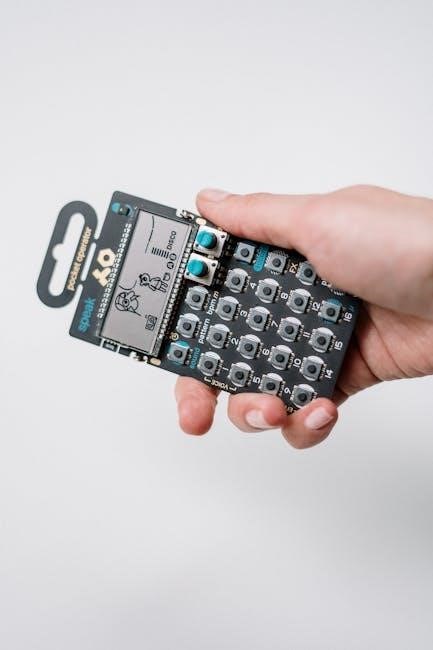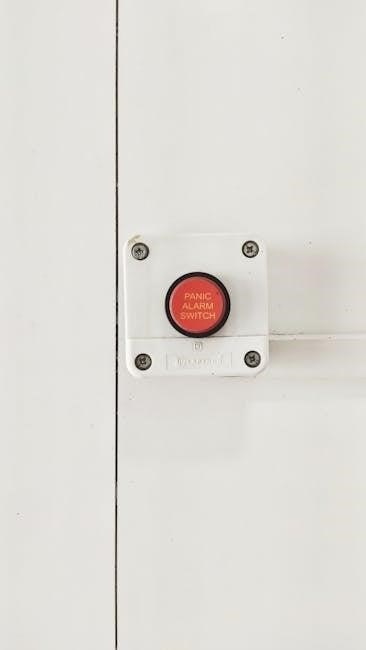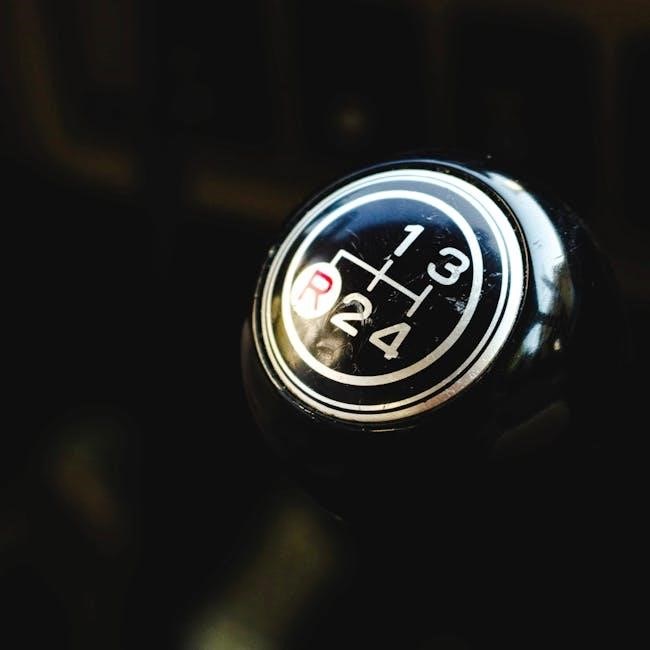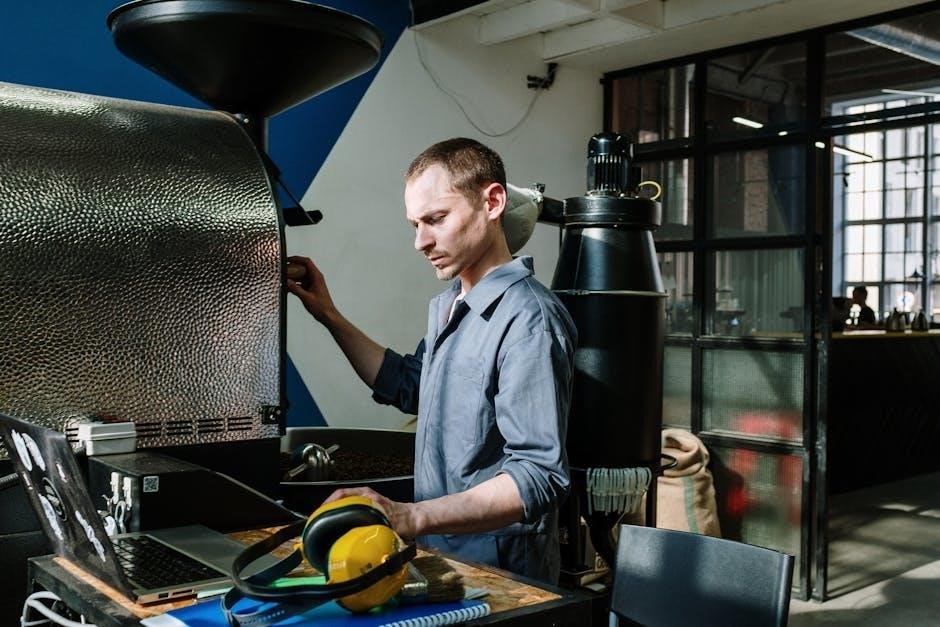DMX 512 Controller Manual: An Overview
This manual provides essential information for operating DMX 512 lighting controllers. It covers safe installation practices, controller features, and troubleshooting common issues. Users will learn how to maximize the benefits of their DMX equipment.
What is DMX 512?
DMX 512, or Digital Multiplex, is an industry-standard digital communication protocol widely used in entertainment lighting equipment. It allows controllers to communicate with lighting fixtures and other devices. This protocol enables precise control over various parameters, such as intensity, color, and movement. DMX 512 is essential for creating complex lighting designs in stage, architectural, and entertainment settings. The DMX 512 protocol ensures compatibility between different brands of lighting equipment. Understanding DMX 512 is crucial for anyone working with modern lighting systems, as it provides a standardized way to control lighting fixtures.
Understanding DMX 512 Controller Basics
This section details the fundamental aspects of DMX 512 controllers. It covers their functions, connectivity, and basic operation. Understanding these basics is crucial for effectively utilizing DMX controllers in lighting applications.
DMX 512 Controller Functions
DMX 512 controllers serve as the central hub for managing lighting and effects in various entertainment and architectural settings. These controllers facilitate communication between the user and lighting fixtures, allowing for precise control over intensity, color, movement, and other parameters. They translate user inputs into DMX signals, which are then transmitted to compatible devices. Furthermore, DMX controllers often offer features such as scene programming, chase creation, and manual override options. This allows for dynamic and customized lighting displays. Understanding these functions is crucial for maximizing the potential of DMX 512 lighting systems.
Connecting DMX Devices
Properly connecting DMX devices is crucial for a functional lighting system. DMX utilizes a daisy-chain configuration. Start by connecting the DMX output of the controller to the DMX input of the first fixture. Then, link the DMX output of the first fixture to the DMX input of the next, and so on. Ensure each device is correctly addressed according to its user manual. Terminate the chain with a DMX terminator to prevent signal reflections. Incorrect connections can lead to signal degradation or device malfunction. Always refer to the device’s manual for specific connection guidelines.

Common DMX 512 Controller Models
Several DMX 512 controller models exist, each offering unique features. These range from basic units like the DMX-384B to more advanced models such as the Sunny 512 and QTX ADMX-512, each with distinct capabilities.
DMX-384B Controller Features
The DMX-384B controller is designed for controlling up to 24 intelligent lighting fixtures, each with a maximum of 16 channels. This DMX 512 controller allows users to manage various lighting setups, offering a user-friendly interface for programming and controlling lighting effects. It supports standard DMX 512 protocol, ensuring compatibility with a wide range of lighting equipment. The DMX-384B also features the ability to control chase programs and manual control options, making it suitable for different venues such as ballrooms, taprooms, and small shows. This controller is a practical choice for users seeking essential DMX control.
Sunny 512 Controller Operation
The AVALITES Sunny 512 controller is a DMX 512 console designed for controlling various scanners. It allows users to manage up to 512 channels, offering extensive control over lighting fixtures. This controller enables the programming of scenes and chases, facilitating dynamic lighting displays. The Sunny 512’s manual provides information on control channel data for ordinary scanners, including control types such as IRIS and color discs. Its intuitive interface makes it suitable for both beginners and experienced lighting technicians. It’s designed to provide unparalleled service with exceptional customer support.
QTX ADMX-512 Controller Capabilities
The QTX ADMX-512 is a versatile DMX or RDM controller, managing 512 channels across 32 fixtures. This controller offers comprehensive control over lighting systems, allowing users to create complex lighting designs. It features 32 storable scenes and chases, providing ample storage for various lighting arrangements. A USB backup feature ensures that programmed settings are safely stored. This powerful controller is ideal for users seeking extensive control and versatility in their lighting setups. The comprehensive user manual provides detailed instructions for maximizing its capabilities.

Programming and Operating a DMX 512 Controller
This section details programming DMX controllers, covering scene creation, chase execution, and manual control. Understanding these functions unlocks the full potential of DMX lighting systems for tailored lighting designs.
Scene Programming
Scene programming on a DMX 512 controller involves setting specific values for each channel to create a desired lighting look. This includes adjusting intensity, color, and position of lighting fixtures. Controllers allow users to store these scenes in banks for easy recall. To enter programming mode, hold the program button. Number keys are used to select the scanner to be controlled, and faders adjust channel values. Duplex buttons have different functions in program and run modes, and changes made in manual mode are temporary. Deleting a scene requires entering programming mode.
Chase Creation and Execution
Chase creation involves sequencing multiple scenes to create dynamic lighting effects. DMX 512 controllers allow users to program chases by storing a series of scenes in a specific order. Controllers typically offer multiple chases, each capable of holding numerous scenes. The speed and fade time of the chase can be adjusted to control the rhythm and smoothness of the transitions. Chases can be executed automatically or manually, providing flexibility in performance. Manual control allows for real-time adjustments, while automated execution ensures consistent and synchronized lighting sequences.
Manual Control Options
DMX 512 controllers offer manual control options for real-time adjustments. Users can directly manipulate individual channels to fine-tune lighting parameters. Faders and knobs provide tactile control over intensity, color, and other attributes. Manual mode allows for spontaneous changes, adapting to live performances. Some controllers feature a “sound-to-light” mode, synchronizing lighting with music. Manual overrides enable quick corrections or effects, ensuring precise control. The manual control options are essential for creating dynamic effects and responding to the needs of any performance, show or event requiring the use of a lighting system.

Troubleshooting Common DMX 512 Issues
Addressing conflicts and signal problems are common DMX challenges. This section provides solutions for resolving these issues. Learn to diagnose connection errors and ensure stable DMX communication for seamless lighting control.
Addressing Problems
Addressing issues are frequently encountered when setting up DMX systems. Conflicts arise when multiple devices share the same DMX address, leading to unpredictable behavior. Each fixture needs a unique starting address to receive the correct control signals. Refer to the fixture’s user manual for DMX addressing instructions. Proper addressing ensures that each light responds independently to the controller’s commands. Use dip switches or digital interfaces to configure the starting address. Incorrect addressing results in lights not responding or behaving erratically, hindering the desired lighting effects and overall system performance.
Signal Issues and Solutions
DMX signal problems can disrupt lighting control. Signal loss occurs with long cable runs or faulty connections. Use DMX terminators at the end of the chain to prevent signal reflection. Verify cable integrity to rule out breaks or shorts. Damaged cables degrade the signal, causing erratic lighting behavior. Check connectors for corrosion and secure fit. Employ DMX amplifiers or repeaters for extended distances to boost the signal strength. Noise interference from power cables can also corrupt the DMX signal. Keep DMX cables separate from power lines to minimize interference and maintain signal integrity.
DMX 512 Controller Applications
DMX 512 controllers are vital in controlling stage lighting for concerts and theatrical productions. Their use extends to architectural lighting, creating dynamic environments in buildings and other structures.
Stage Lighting Control
DMX 512 controllers are essential tools in stage lighting, offering precise control over various lighting fixtures. These controllers allow lighting designers to create dynamic and immersive visual experiences for theatrical productions, concerts, and live events. By manipulating parameters such as intensity, color, and movement, DMX controllers enable intricate lighting cues that synchronize with music, action, and mood.
With the ability to manage multiple lighting channels simultaneously, operators can craft complex lighting designs, enhancing the overall impact of performances. DMX’s standardized protocol ensures compatibility across different brands, providing flexibility in lighting setups. This standardization assists in simple operation.
Architectural Lighting
DMX 512 controllers extend beyond stage lighting into architectural applications, providing sophisticated control over building illumination. These controllers allow architects and designers to dynamically adjust lighting levels and colors, creating ambiance and highlighting architectural features. DMX systems enable the creation of custom lighting scenes, optimizing energy usage while enhancing the aesthetic appeal of spaces.
Integration with building automation systems allows for centralized control and automated responses to environmental conditions or occupancy patterns. Whether illuminating facades, interiors, or landscapes, DMX 512 controllers offer a versatile solution for achieving precise and impactful lighting effects. DMX is the way forward.

Safety Instructions and Maintenance
Ensuring safe operation and prolonging the life of your DMX 512 controller requires adherence to crucial safety guidelines. Regular maintenance, as outlined in this section, is essential for reliable performance and avoiding potential hazards.
Safe Installation Practices
Prioritize safety during the installation of your DMX 512 controller to prevent accidents and ensure optimal performance. Always disconnect the power supply before making any connections or adjustments. Refer to the manufacturer’s instructions for proper wiring and grounding procedures. Ensure adequate ventilation around the controller to prevent overheating. Avoid exposing the controller to moisture or extreme temperatures. Use appropriate cables and connectors that meet DMX standards. Securely mount the controller to prevent accidental falls or damage. Regularly inspect cables for wear and tear, replacing them as needed. Following these guidelines ensures a safe and reliable DMX setup.
Maintenance Tips for Longevity
To extend the lifespan of your DMX 512 controller, regular maintenance is crucial. Keep the controller clean by using a soft, dry cloth to remove dust and debris. Avoid using solvents or harsh chemicals that could damage the surface. Periodically check all connections and tighten any loose screws or connectors. Inspect cables for damage and replace them as needed. Store the controller in a dry, dust-free environment when not in use. Avoid exposing the controller to extreme temperatures or humidity. Update the controller’s firmware regularly to ensure optimal performance. By following these simple maintenance tips, you can ensure that your DMX 512 controller will provide reliable service for years to come.

